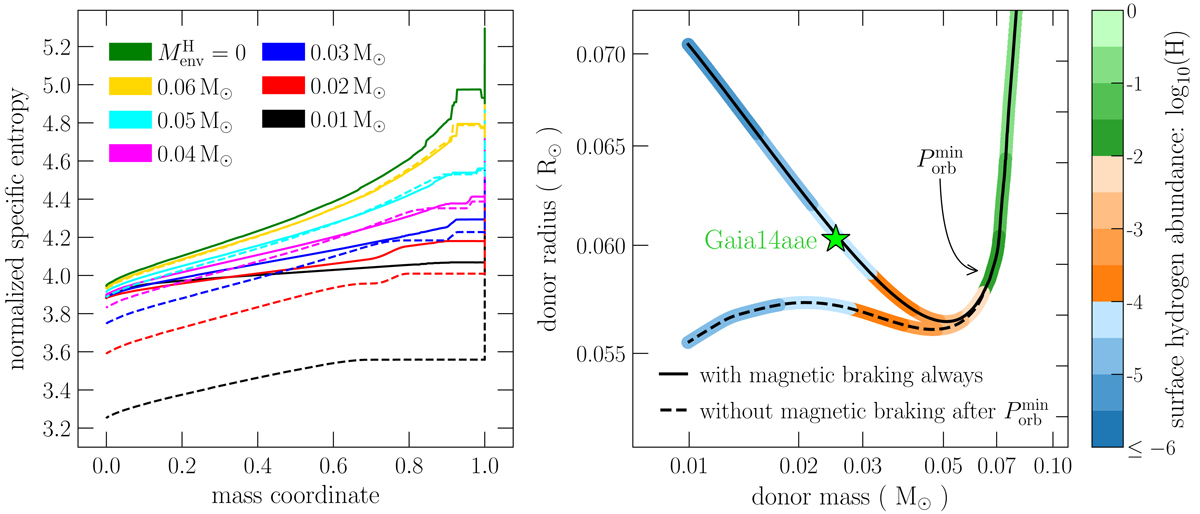Fig. 7.

Download original image
Magnetic braking during post-orbital-period-minimum evolution is crucial for explaining systems such as Gaia14aae (green star), ZTF J1637+49 and CRTS J1122–1110. We ran two models, one allowing for magnetic braking during post-orbital-period-minimum evolution (solid lines) and one assuming no magnetic braking after the hydrogen envelope vanishes at the orbital period minimum (dashed lines). In both cases, the initial post-CE orbital period, white dwarf and companion masses were 1.01 d, 0.87 and 1.16 M⊙, respectively, and the mass of the helium core of the donor at the onset of mass transfer was 0.07 M⊙. If gravitational wave radiation is the only orbital angular momentum loss mechanism, the existence of Gaia14aae, ZTF J1637+49, and CRTS J1122–1110 cannot be explained because the longer mass-loss timescale causes the entropy of the donor to drop (dashed lines in the left panel) and the donor to relax towards thermal equilibrium. If, on the other hand, orbital angular momentum loss is sufficiently strong, the central entropy of the donor remains high (solid lines in the left panel) which explains why the donors in Gaia14aae, ZTF J1637+49, and CRTS J1122–1110 are significantly oversized for their masses and orbital periods. See Sect. 4.3 for more details.
Current usage metrics show cumulative count of Article Views (full-text article views including HTML views, PDF and ePub downloads, according to the available data) and Abstracts Views on Vision4Press platform.
Data correspond to usage on the plateform after 2015. The current usage metrics is available 48-96 hours after online publication and is updated daily on week days.
Initial download of the metrics may take a while.


